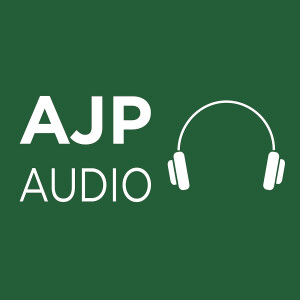
January 2021: Brain Activation and Symptom Reduction in OCD Following CBT
 2021-01-01
2021-01-01
Executive Editor Michael Roy speaks with Luke J. Norman, Ph.D., and Kate D. Fitzgerald, M.D., about their article examining whether brain activity is associated with treatment response to cognitive-behavioral therapy (CBT) in adolescents and adults with obsessive-compulsive disorder (OCD), and whether any associations are treatment specific relative to an active control psychotherapy (stress management therapy; SMT).
Dr. Luke Norman was recently a neuroscience postdoctoral fellow at the University of Michigan. He is now affiliated with the National Institutes of Health. His research has looked at treatment for obsessive-compulsive disorder and attention deficit hyperactivity disorder.
Dr. Kate Fitzgerald is the Phil F. Jenkins Research Professor of Depression and associate professor in the Department of Psychiatry at the University of Michigan. She is the academic director for child and adolescent psychiatry and co-director of the Pediatric Anxiety Disorders Clinic. She is also an adjunct associate professor in the Department of Psychology. Her work has examined pediatric anxiety and obsessive-compulsive disorders, and currently, she is interested in looking for biomarkers of pediatric anxiety disorders that may represent options for novel, targeted treatments. She also has done work focusing on the use of cognitive-behavioral therapy in schools.
How the authors became interested in this area of research [2:42] How prevalent obsessive-compulsive disorder (OCD) is among the general population, and its conventional treatment approaches [5:50] Comparing cognitive-behavioral therapy (CBT) with a control psychotherapy called stress management therapy (SMT) [8:42] Details about two neural networks that have been implicated in OCD (the cingulo-opercular network and the orbito-striato-thalamic network) [12:04] Makeup of study participants, and methods the authors used to analyze the data [14:07] Comparison of symptom change between the group who received CBT relative to the group who received SMT [17:39] Details from functional MRI scans [18:23] Differences by age [20:40] Other notable study results [21:25] Limitations of the study [22:21] Implications that this work has for the understanding and treatment of OCD [23:30] Key points for researchers, clinicians, and other mental health professionals [24:50] Recommendations for further research [26:07]Be sure to let your colleagues know about the podcast, and please rate and review it on Apple Podcasts, Google Podcasts, Stitcher, Spotify, or wherever you listen to it.
Subscribe to the podcast here.
Listen to other podcasts produced by the American Psychiatric Association.
Browse articles online.
Watch Deputy Editor Daniel S. Pine, M.D., present highlights from the January 2021 issue.
Follow the journals of APA Publishing on Twitter.
E-mail us at ajp@psych.org
More Episodes
 2017-10-01
2017-10-01
 52
52
 2017-09-01
2017-09-01
 40
40
 2017-08-01
2017-08-01
 4
4
 2017-07-01
2017-07-01
 7
7
 2017-06-01
2017-06-01
 1
1
 2017-05-01
2017-05-01
 4
4
 2017-04-01
2017-04-01
 1
1
 2017-03-01
2017-03-01
 4
4
 2017-02-01
2017-02-01
 2
2
 2017-01-03
2017-01-03
 1
1
 2016-12-01
2016-12-01
 2
2
 2016-11-01
2016-11-01
 2
2
 2016-10-01
2016-10-01
 8
8
 2016-09-01
2016-09-01
 2016-08-01
2016-08-01
 2
2
 2016-07-01
2016-07-01
 5
5
 2016-06-01
2016-06-01
 1
1
 2016-05-01
2016-05-01
 2016-04-01
2016-04-01
 2016-03-01
2016-03-01
Create your
podcast in
minutes
- Full-featured podcast site
- Unlimited storage and bandwidth
- Comprehensive podcast stats
- Distribute to Apple Podcasts, Spotify, and more
- Make money with your podcast
It is Free
- Privacy Policy
- Cookie Policy
- Terms of Use
- Consent Preferences
- Copyright © 2015-2024 Podbean.com





